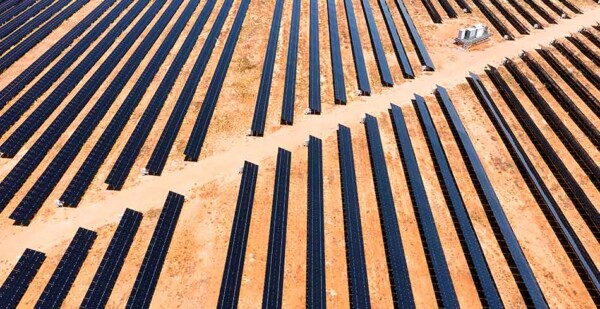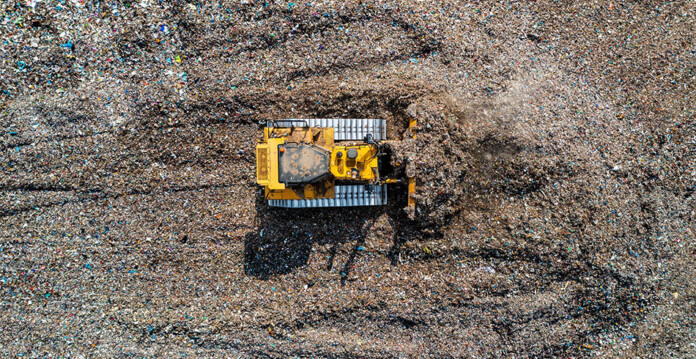By Amelia Prokuda, Anna Mouat, and Suwathie Rajeswaran, Hamilton Locke
Decommissioned landfills present both environmental and economic challenges, but they also offer a golden opportunity to transform waste sites into valuable solar assets. With landfill solar projects gaining momentum globally, we examine whether Australia is fully harnessing this opportunity, and the steps needed to realise the benefits.
Why landfills are ideal for solar farms
Many closed landfills are unsuitable for commercial or residential development due to contamination risks and subsidence concerns. Additionally, the sites require long-term monitoring and maintenance, placing a financial burden on local councils and State governments.2 Solar energy presents a sustainable solution.
Unlike other infrastructure projects, solar panels can be mounted in a way that does not require deep excavation, preserving the integrity of landfill sites. Furthermore, landfills usually already have the necessary infrastructure built at the site, such as access roads, stormwater management systems, security fences and electricity connection systems, reducing establishment costs. They are also usually broad tracts of land with little to no shading, making them ideal locations for generating solar energy.
Related article: From rotten eggs to renewable energy: the power of waste
Additionally, landfill solar farms are uniquely positioned to face minimal land-use conflicts and community opposition. Any large-scale renewable energy project relies on community support, without which development can face significant delays or even cancellation.
For example, farmers have raised concerns that large-scale solar developments may encroach on high quality agricultural land, jeopardising food production. With their expansive surface areas, landfills are well-suited to large-scale solar installations, helping to convert otherwise dormant spaces into productive energy hubs and offering a ‘win-win’ approach.
Landfill solar farms also reap significant socio-economic benefits. Landfill solar farms contribute to environmental sustainability, creating renewable energy parks that support decarbonisation efforts. Economically, they help offset post-closure maintenance costs for councils while utilising land that has limited commercial value.
Repurposing landfills for sustainable uses can also advance environmental justice by creating jobs and helping revitalise communities. This approach fosters a circular economy, giving new life to land that would otherwise remain unused.

Landfill solar development in Australia
The Albury landfill solar farm, launched in 2019, is considered to be one of the pioneering projects of this kind in Australia. This project saw the installation of a 1.1MW (AC) solar PV system, consisting of 4,000 solar panels on a capped landfill site. The solar panels generate emissions-free energy to power about 430 homes as well as an electric vehicle super-charger providing the community with clean energy to charge their electric cars. It was a collaboration between Albury, LMS Energy and Joule Energy, showcasing the potential for landfill solar farms to be both technically viable and beneficial to local communities.
Despite these promising initiatives, a 2019 feasibility study by the Australian Renewable Energy Agency (ARENA) found that without substantial cost reductions and financial incentives, landfill solar projects in Australia were unlikely to be viable. In order to fully capitalise on the vast potential of large-scale landfill solar projects, Australia must overcome key engineering and operational challenges through innovative solutions and strategic mitigation efforts.
The challenges include:
- The costs of developing solar infrastructure on landfill sites which are significantly higher than on undeveloped land due to the need for specialised solutions.
- The need for innovative engineering methods such as ballasted mounting systems that don’t disturb the ground, as traditional mounting structures that require deep foundations could breach the landfill cap and create contamination risks.
- Additional engineering risks caused by the hazardous gases that landfill sites emit.
- Regulatory hurdles and complex grid interconnection requirements that contribute to delays and feasibility concerns.
The United States: leading the way in landfill solar innovation
The US has made significant strides in landfill solar development, demonstrating how these challenges can be effectively addressed. Over 10,000 closed landfills across the US have been identified as potential renewable energy sites, and landfill solar projects have grown by 80% in the past five years. In 2021 alone, over 20 major projects were announced, adding more than 200MW of solar capacity. As of 2023, the US had approximately 2.6GW of landfill solar capacity, with projections estimating a 25-fold increase.
Government incentives have played a crucial role, with the 2022 Inflation Reduction Act offering a tax credit up to 10% for projects built in energy communities, which includes communities with former coal mines and brownfields.
Many states also have incentives and policies supporting landfill solar developments. States including New Jersey and Massachusetts have successfully implemented technical assistance programs and financial incentives to make solar more attractive to developers. As a result of these programs, Massachusetts has emerged as a national leader in utility-scale landfill solar development.
Engineering advancements have also contributed to the viability of landfill solar projects in the US. For example, Terrasmart, a leading provider of commercial to utility scale solar ground mounts, have optimised tilt and ballast designs as a means of reducing costs while maintaining landfill integrity.
These innovations have made landfill solar more financially feasible and technically manageable, demonstrating that with the right investment and policy support, landfill solar can be scalable and effective renewable energy solution.
Related article: Closed landfill site in US becomes largest solar plant
Lessons for Australia: policy, investment and innovation
For Australia to fully unlock the potential of landfill solar, it must address the key challenges identified through targeted policies and financial incentives. Investment in specialised landfill solar engineering expertise will be crucial in overcoming technical barriers and reducing costs.
The Australian Government should consider introducing tax credits, grants, streamlined regulatory processes and other incentives to encourage landfill solar adoption.
Furthermore, research into engineering solutions, tailored specifically to Australian conditions should help mitigate risks associated with hazardous materials and mounting constraints.
With the introduction of effective policy frameworks, continued technological advancements and increased investment, Australia has the opportunity to transform its closed landfills into productive renewable energy assets. A strategic approach to landfill solar development could help bridge the gap between waste management and clean energy generation, with the aim of fostering a more sustainable and economically viable future.
See the original article and a full list of sources and references here.







